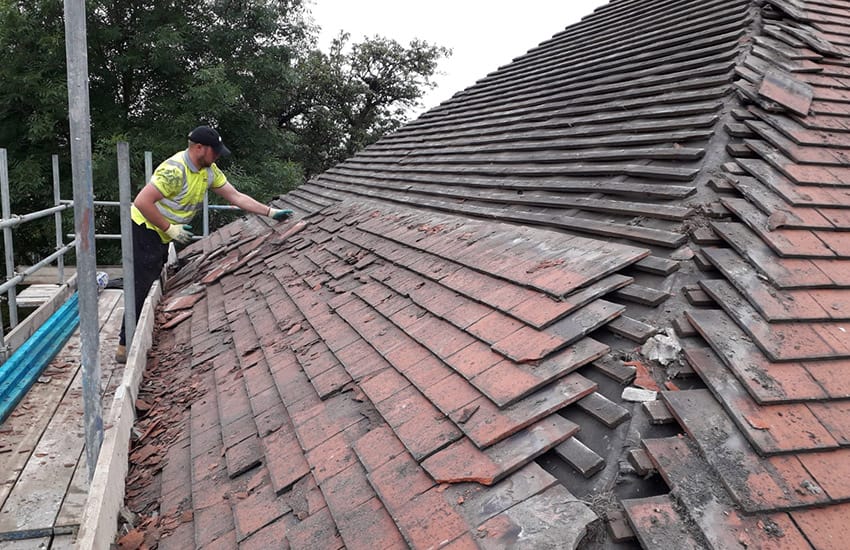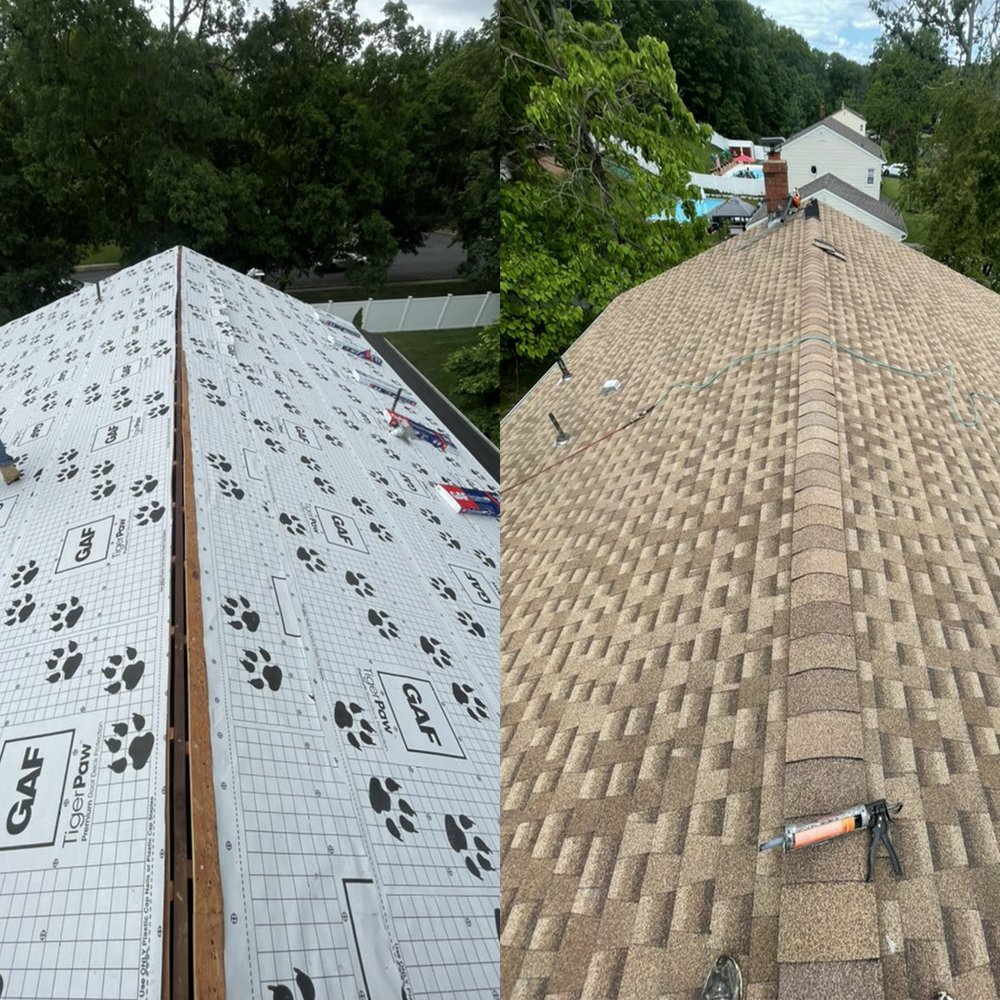Roofers Oahu: Professional Roof Installations and Fixes
Roofers Oahu: Professional Roof Installations and Fixes
Blog Article
Comprehending the Various Kinds Of Roofs: A Comprehensive Guide for Homeowners
In the world of homeownership, choosing the proper roof covering design is a decision that lugs significant ramifications for both capability and visual charm. With a selection of choices-- varying from the traditional gable to the modern level-- each kind offers special benefits and challenges that must straighten with the homeowner's particular demands and environmental considerations. Understanding these differences not only help in making an informed selection but additionally affects long-term upkeep and energy effectiveness. As we discover the intricacies of various roofing kinds, it becomes apparent that size does not fit all; the ideal option may stun you.
Gable Roof Coverings
Gable roofing systems, characterized by their triangular form, are among the most popular roof designs because of their simplicity and effectiveness in dropping water and snow. This design includes two sloping sides that meet at a ridge, permitting for reliable water drainage and reducing the risk of water build-up. The high pitch generally related to gable roofing systems improves their capability to manage hefty rainfall, making them suitable for numerous climates.
Along with their useful benefits, gable roof coverings offer visual versatility. They can be adapted to numerous building designs, from conventional to contemporary homes. The layout can likewise suit extra functions such as dormer windows, which boost natural light and air flow in the attic room area.
Moreover, gable roofings offer ample room for insulation, adding to energy performance. Homeowners can pick from a variety of roof materials, including asphalt shingles, metal, and ceramic tiles, further improving customization alternatives.
In spite of their advantages, saddleback roofs may need extra support in areas susceptible to high winds or heavy snowfall. Generally, the gable roofing system remains a popular choice due to its mix of functionality, sturdiness, and aesthetic allure.
Flat Roofs
Flat roofs are typically recognized for their minimalist design and functional applications, especially in industrial and industrial setups (oahu roofing). These roofing systems include a nearly straight or straight surface area, which permits very easy building and flexible room utilization. While they may do not have the visual allure of pitched roofings, level roofing systems supply various advantages, particularly in metropolitan environments where making the most of area is important
Among the primary benefits of level roofing systems is their access. Home owners can make use of the roofing system space for numerous purposes, such as rooftop yards, terraces, or photovoltaic panel installations. Additionally, flat roofings are typically much more economical to preserve and mount compared to their sloped counterparts, as they call for fewer materials and labor.
Usual materials used for flat roofing systems consist of built-up roof covering (BUR), modified bitumen, and single-ply membranes, each offering distinctive benefits. In general, level roofs serve as a practical and adaptable selection for lots of homeowners and companies alike.
Hip Roof Coverings
Hip roofs are identified by their sloped sides that converge on top, creating a ridge. This design stands out from gable roofing systems, as all 4 sides of a hip roofing system incline downwards toward the walls, giving a much more secure framework. The angle of the inclines can vary, permitting versatility in building appearances and capability.
One of the key advantages of hip roof coverings is their ability to stand up to heavy winds and negative weather. The sloped surface areas make it possible for much better water drainage, decreasing the danger of leakages and water damages. In addition, hip roofing systems supply enhanced attic space, which can be utilized for storage or perhaps converted right into livable locations.
However, building a hip roofing can be much more complex and pricey than easier roofing system types, such as gable roofings. The extra product and labor involved in producing the inclines and ensuring correct architectural stability can lead to greater costs. Regardless of these disadvantages, numerous house owners favor hip roofs for their longevity, aesthetic allure, and capacity for power efficiency.
Mansard Roof Coverings
Mansard roofing systems, frequently identified by their special four-sided style, function 2 slopes on each side, with the lower slope being steeper than the upper. This architectural design, stemming from France in the 17th century, is official site not just aesthetically appealing however practical, as it makes the most of the usable area in the top floors of a structure. The steep reduced incline enables even more clearance, making it an optimal choice for attics or lofts, which can be converted right into living spaces.
Mansard roof coverings are characterized by their flexibility, fitting various architectural designs, from conventional to contemporary. They can be created with different products, including asphalt tiles, slate, or metal, giving property owners with a variety of alternatives to match their choices and budget plans. In addition, the layout permits for the assimilation of dormer windows, boosting natural light and ventilation in the top levels.
Nonetheless, it is vital to take into consideration the potential downsides. Mansard roofings might need even more upkeep as a result of the complexity of their style, and their steep inclines can be challenging for snow and rain overflow. Generally, mansard roofs combine style with functionality, making them a popular selection among home owners looking for distinctive building attributes.
Shed Roofings
As property owners significantly seek simpleness and capability in their architectural styles, lost roofs have emerged as a prominent option. Defined by a single sloping airplane, a shed roof covering provides a minimal visual that enhances different home styles, from modern to rustic.
Among the primary benefits of a shed roof covering is its straightforward construction, which commonly converts to decrease labor and material prices. This layout permits efficient water drain, decreasing the danger of leakages and water damages. Additionally, the upright incline gives adequate space for skylights, enhancing natural light within the inside.
Lost roofs additionally supply versatility in regards to usage. They can be successfully integrated into additions, garages, or outside structures like pavilions and sheds. Moreover, this roofing system style can accommodate numerous roofing materials, consisting of metal, asphalt tiles, or perhaps green roofings, lining up with environment-friendly efforts.
However, it is important to take into consideration regional climate conditions, as hefty snow tons might require changes to the roofing's angle or structure. In general, dropped roofing systems offer a useful and cosmetically pleasing option for house owners wanting to maximize functionality without jeopardizing design.
Verdict


Gable roof coverings, identified by their triangular form, are among the most popular roof covering designs due to their simpleness and efficiency in dropping water and snow. oahu roofing. The steep pitch commonly associated with gable roofs boosts their capability to manage heavy rainfall, making them ideal for numerous environments
While they may do not have the visual charm of pitched roofings, flat roofs supply various benefits, particularly in city settings where taking full advantage of space is essential.

Report this page